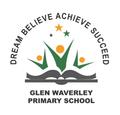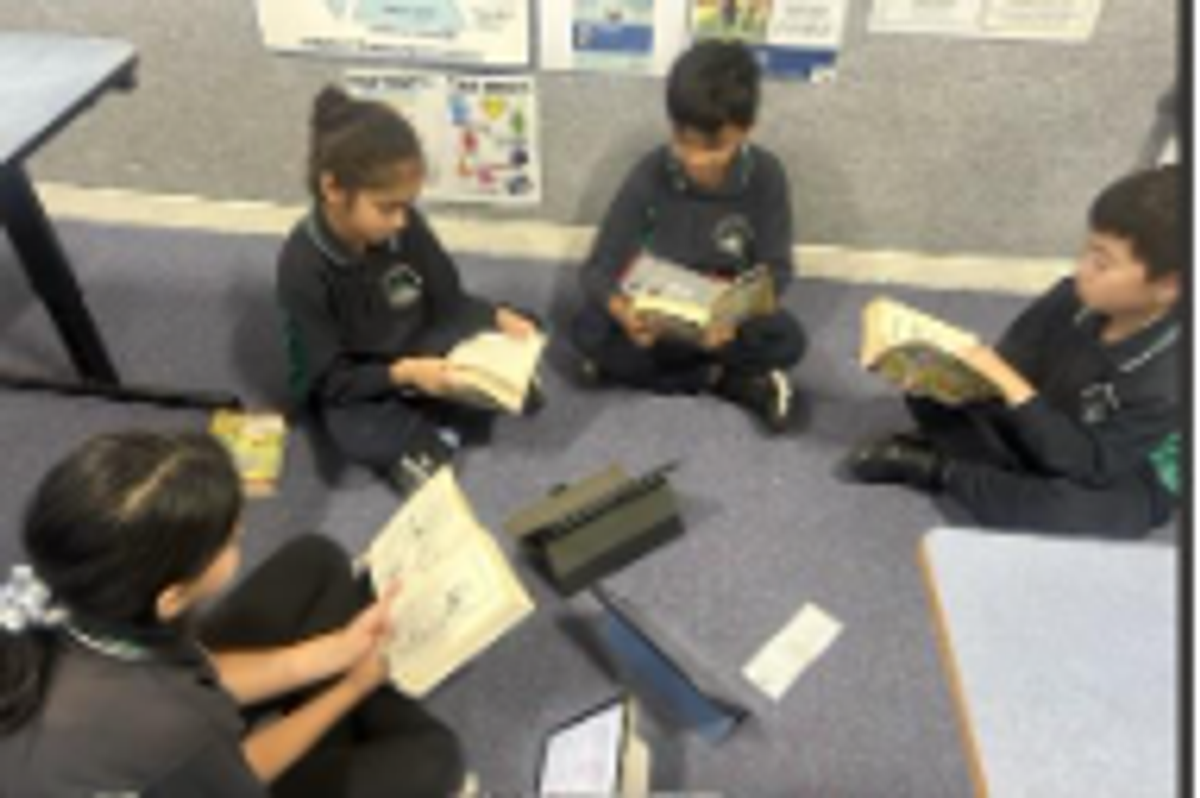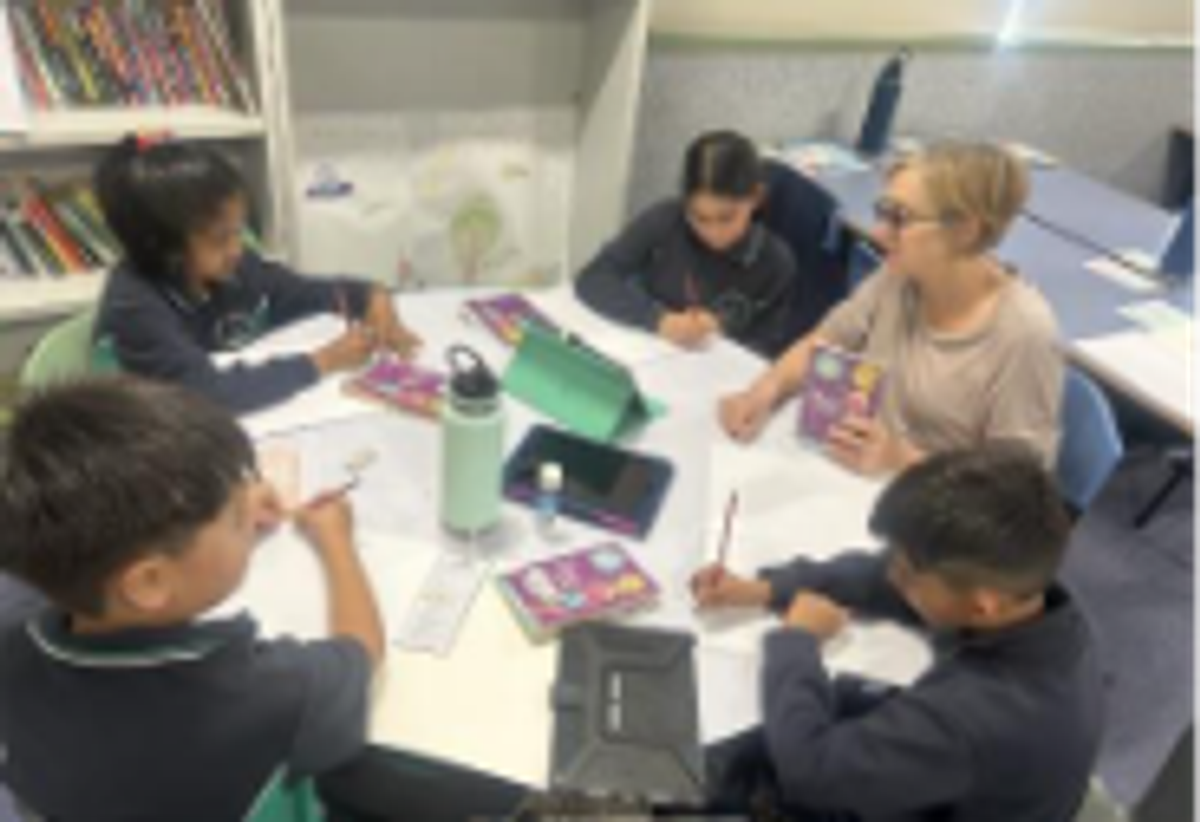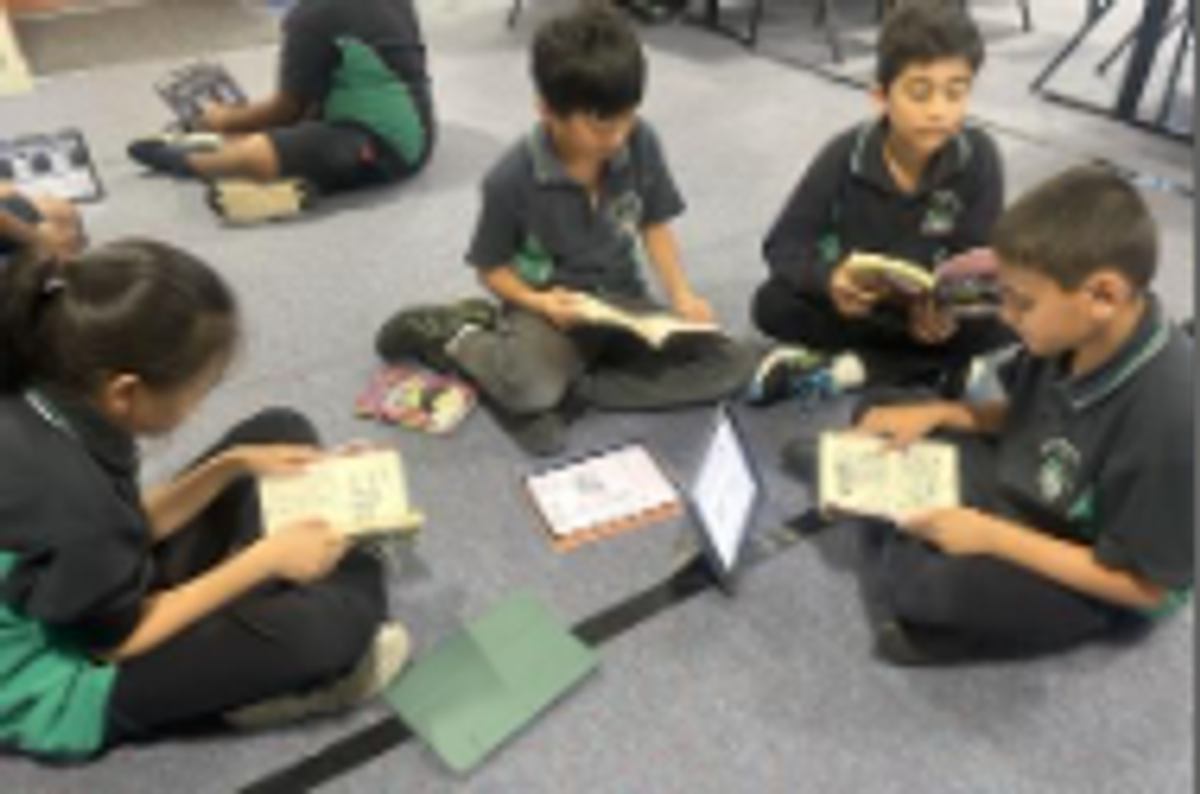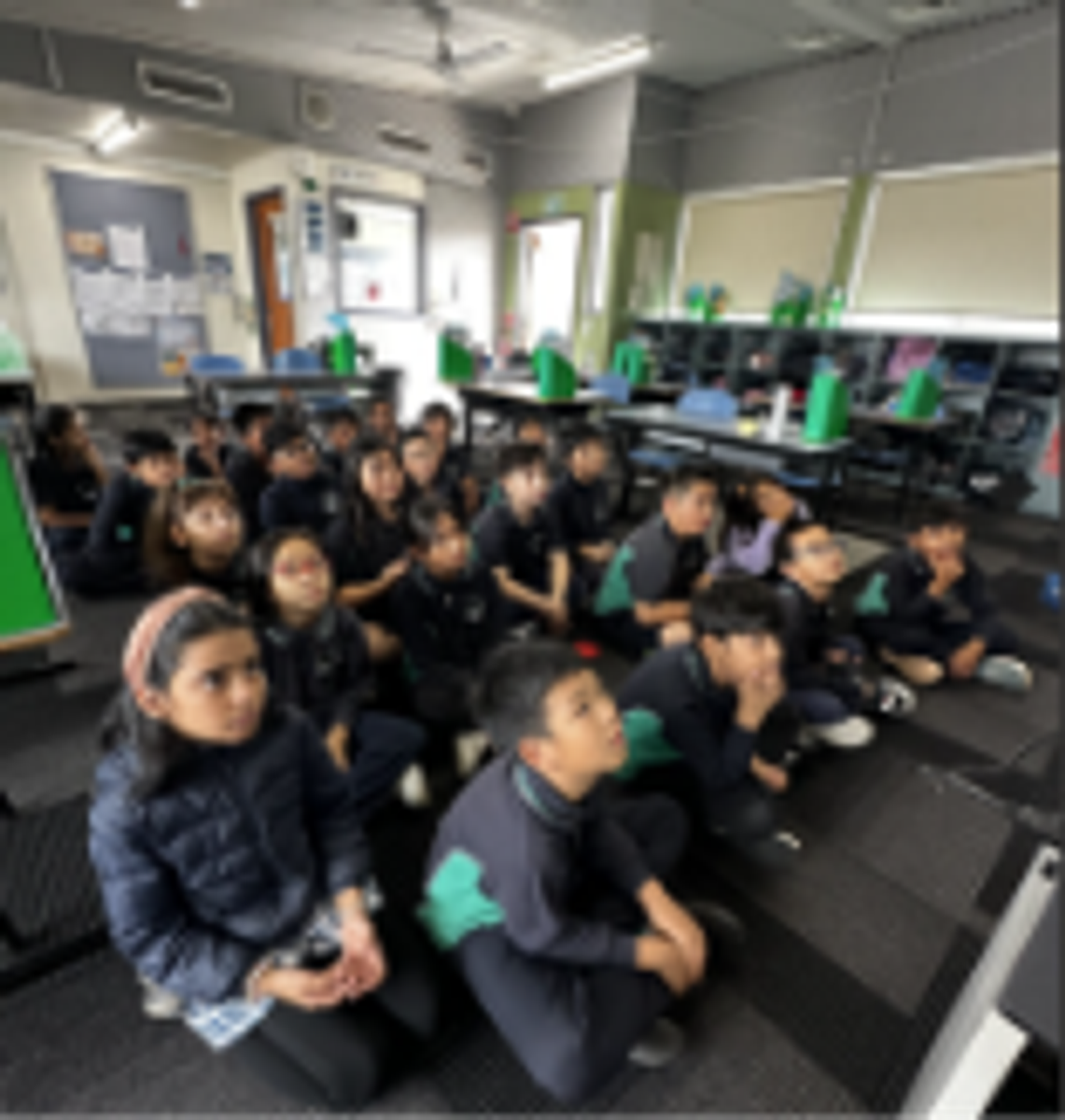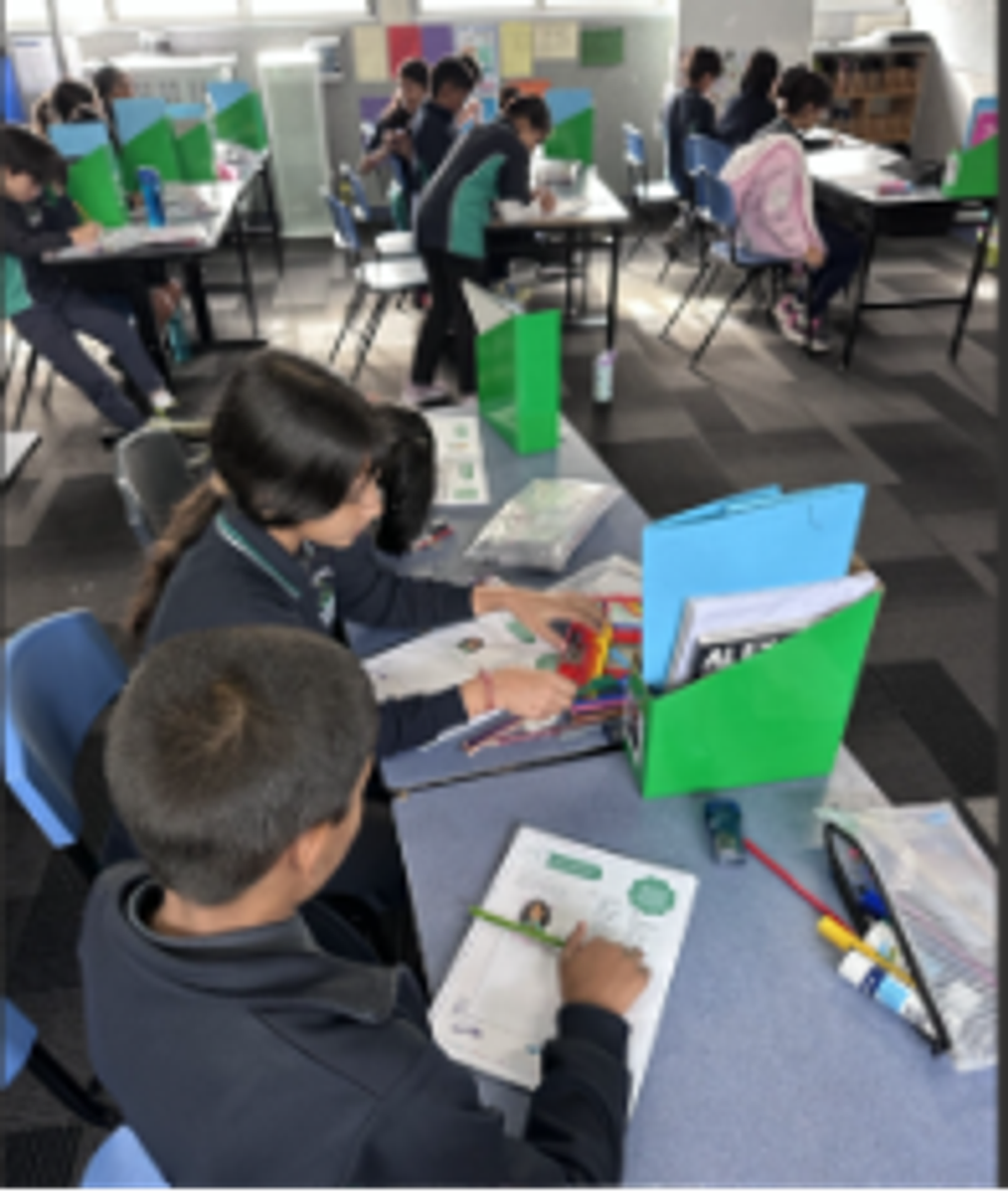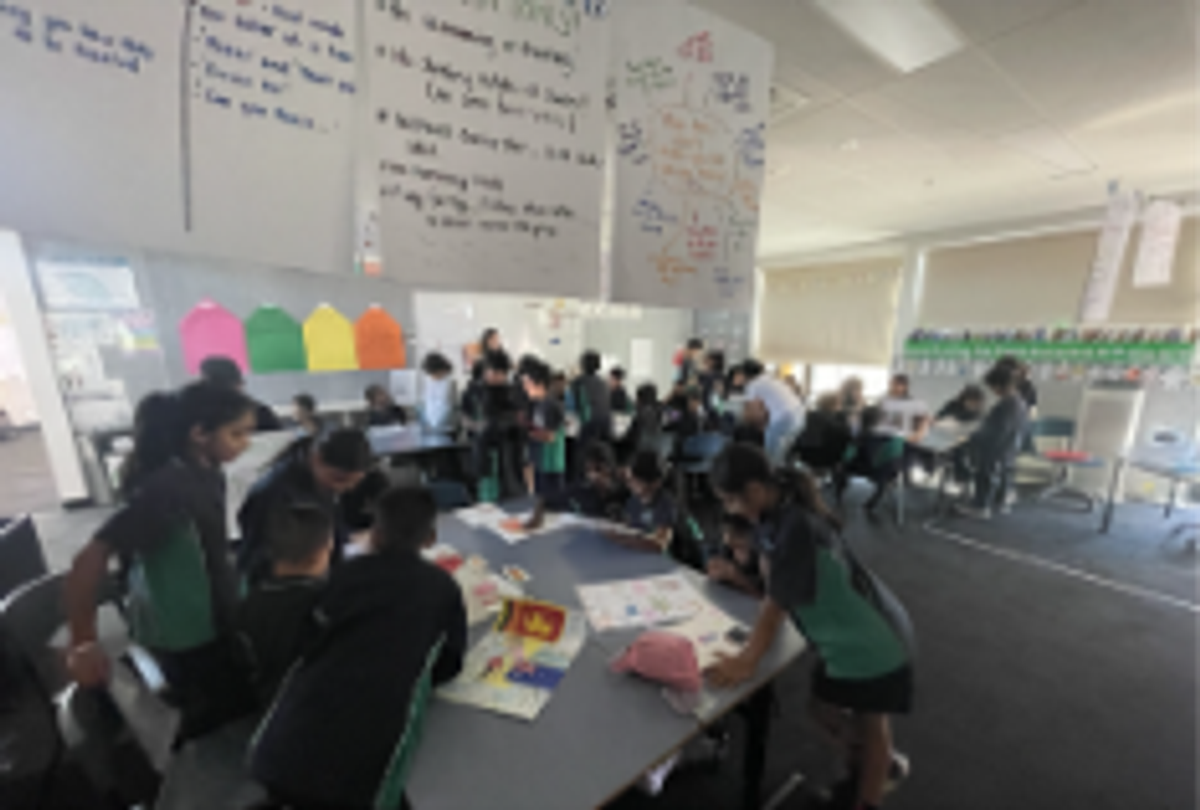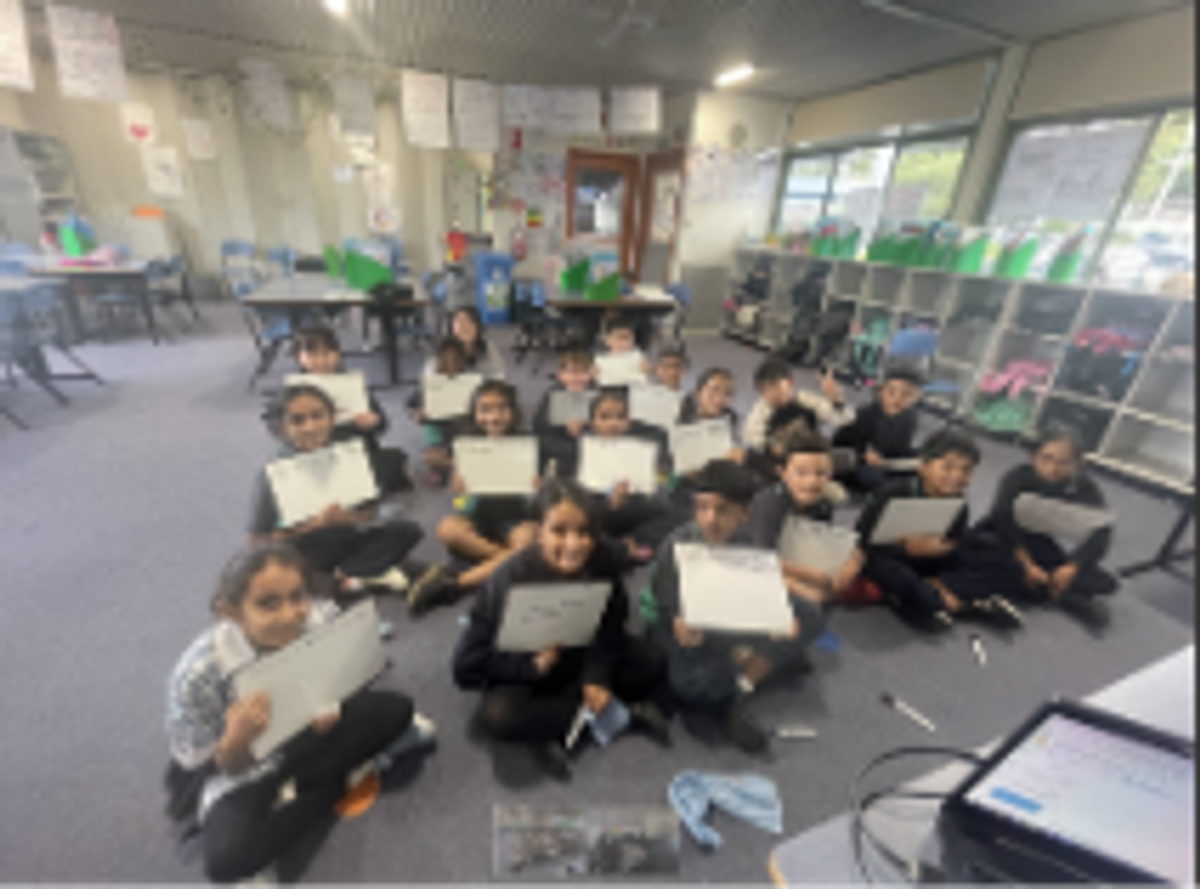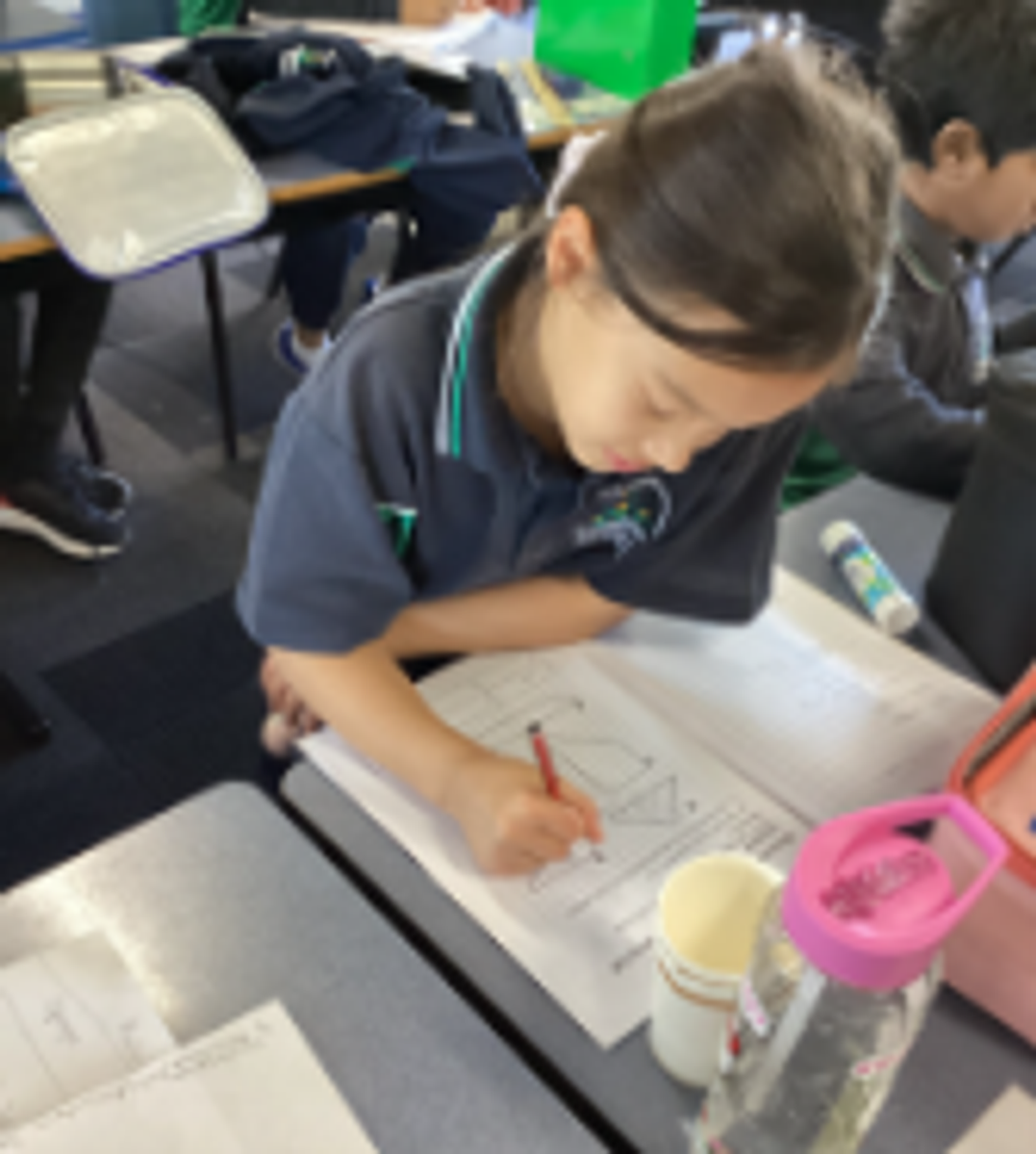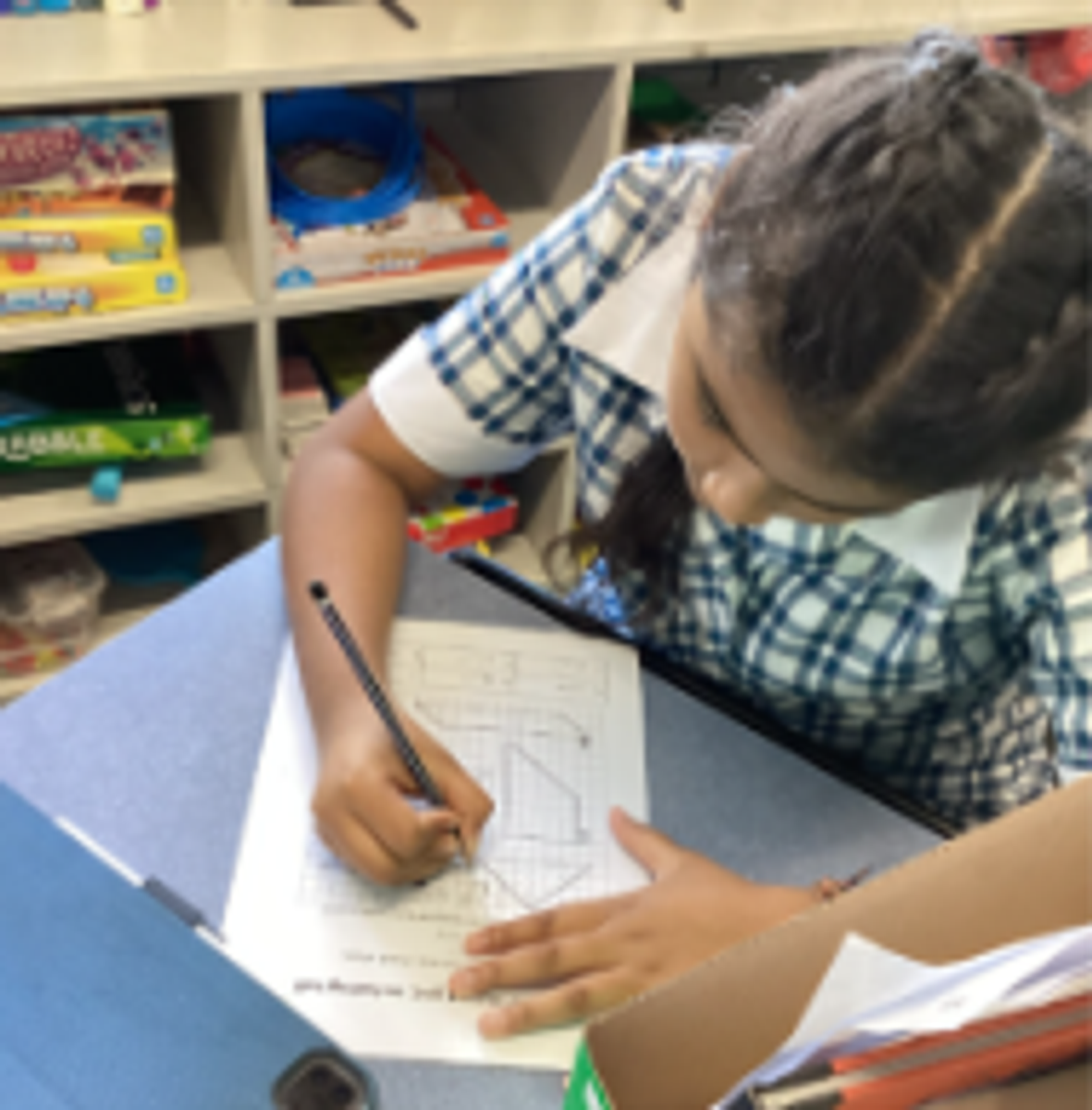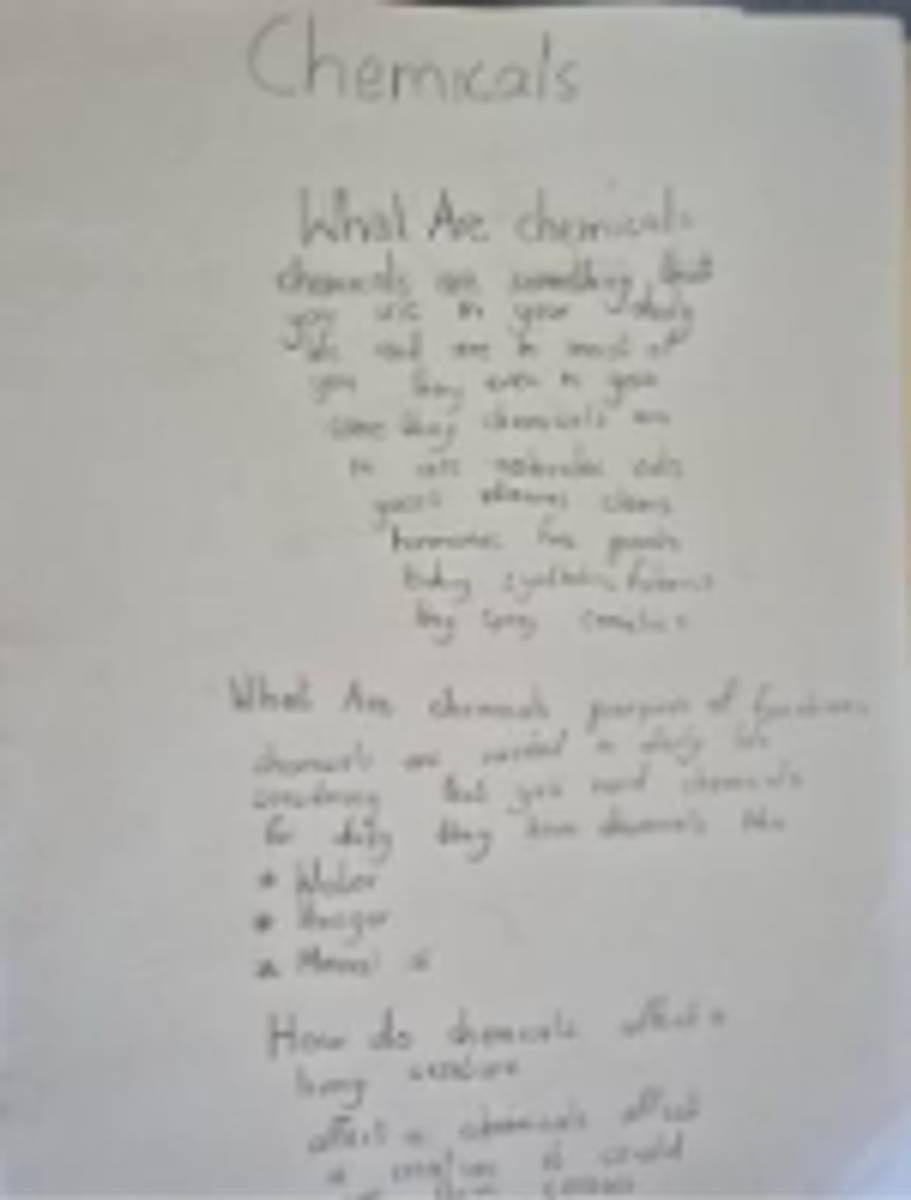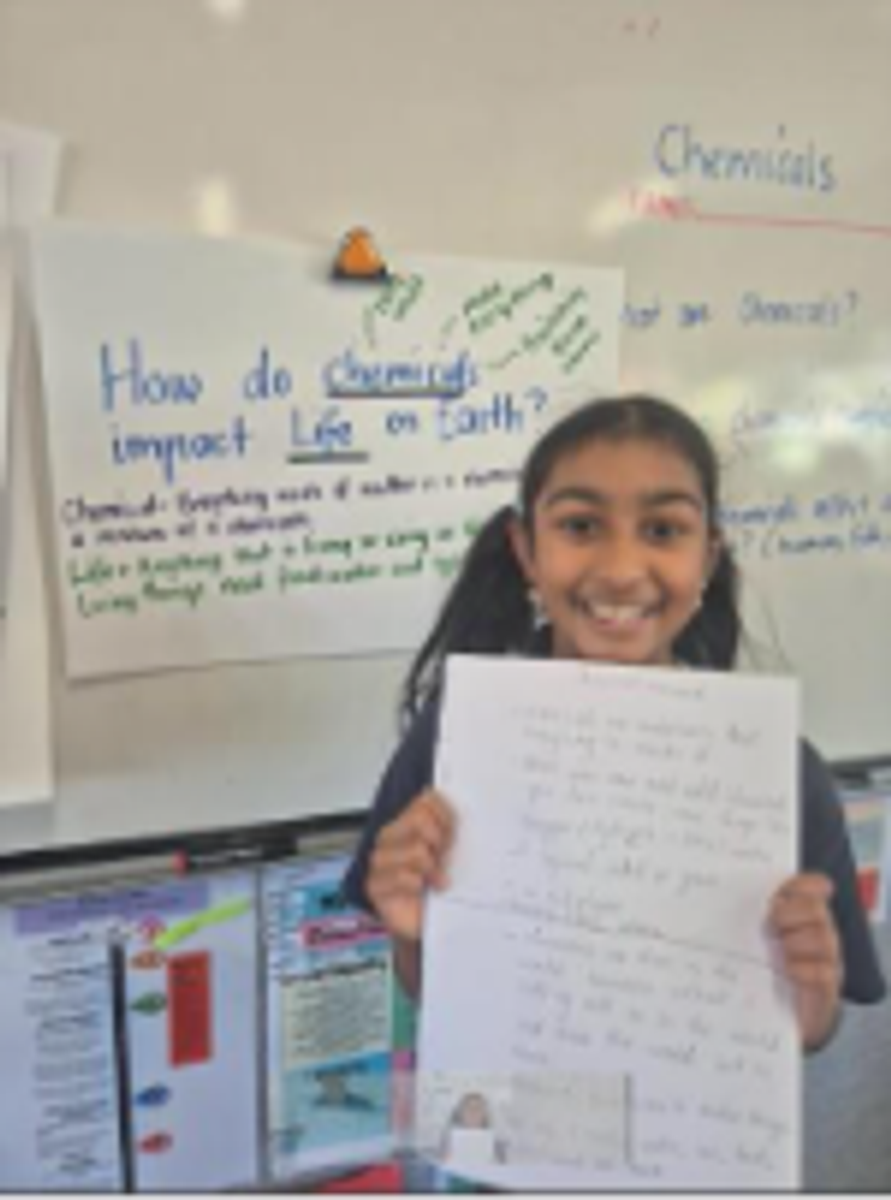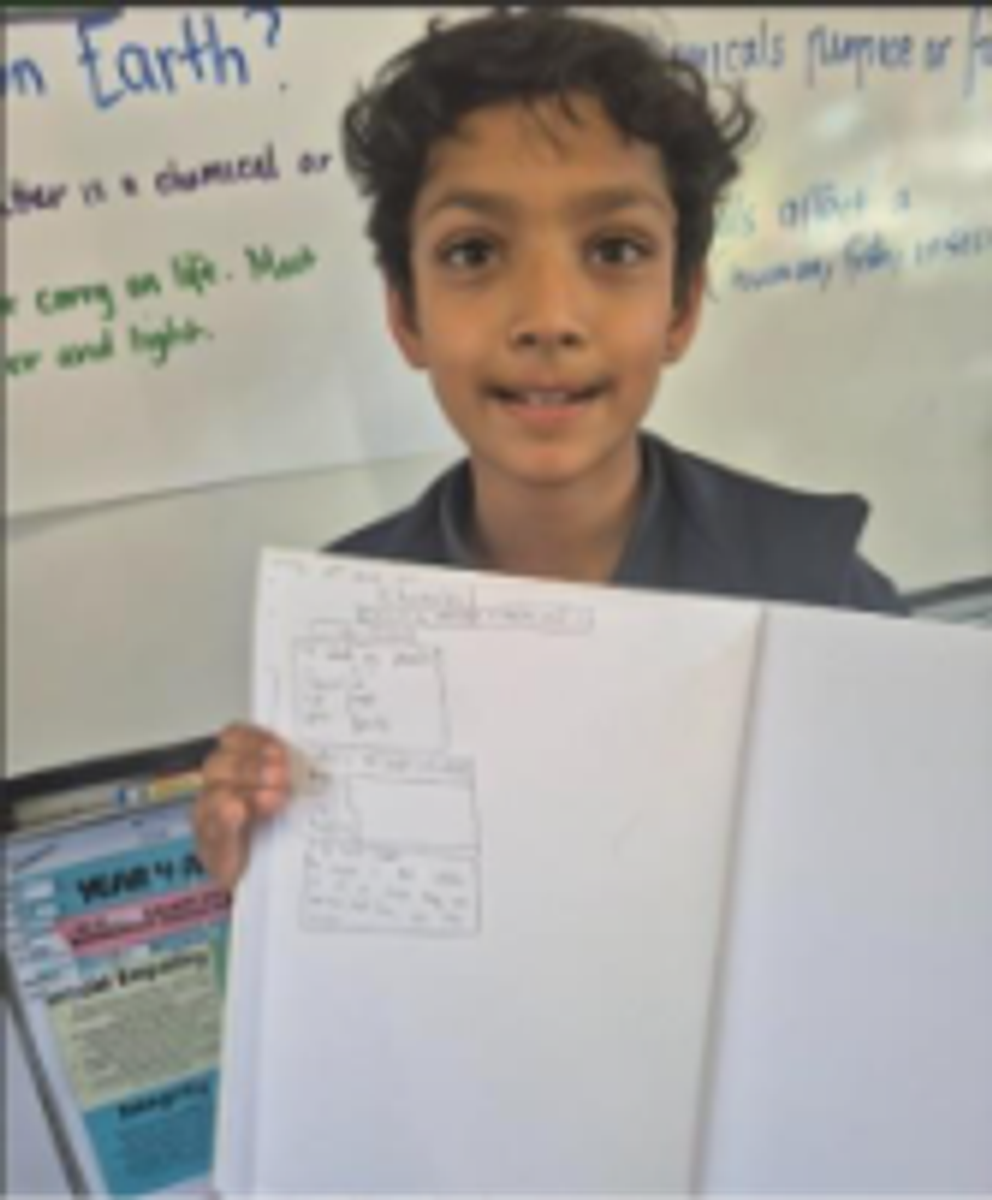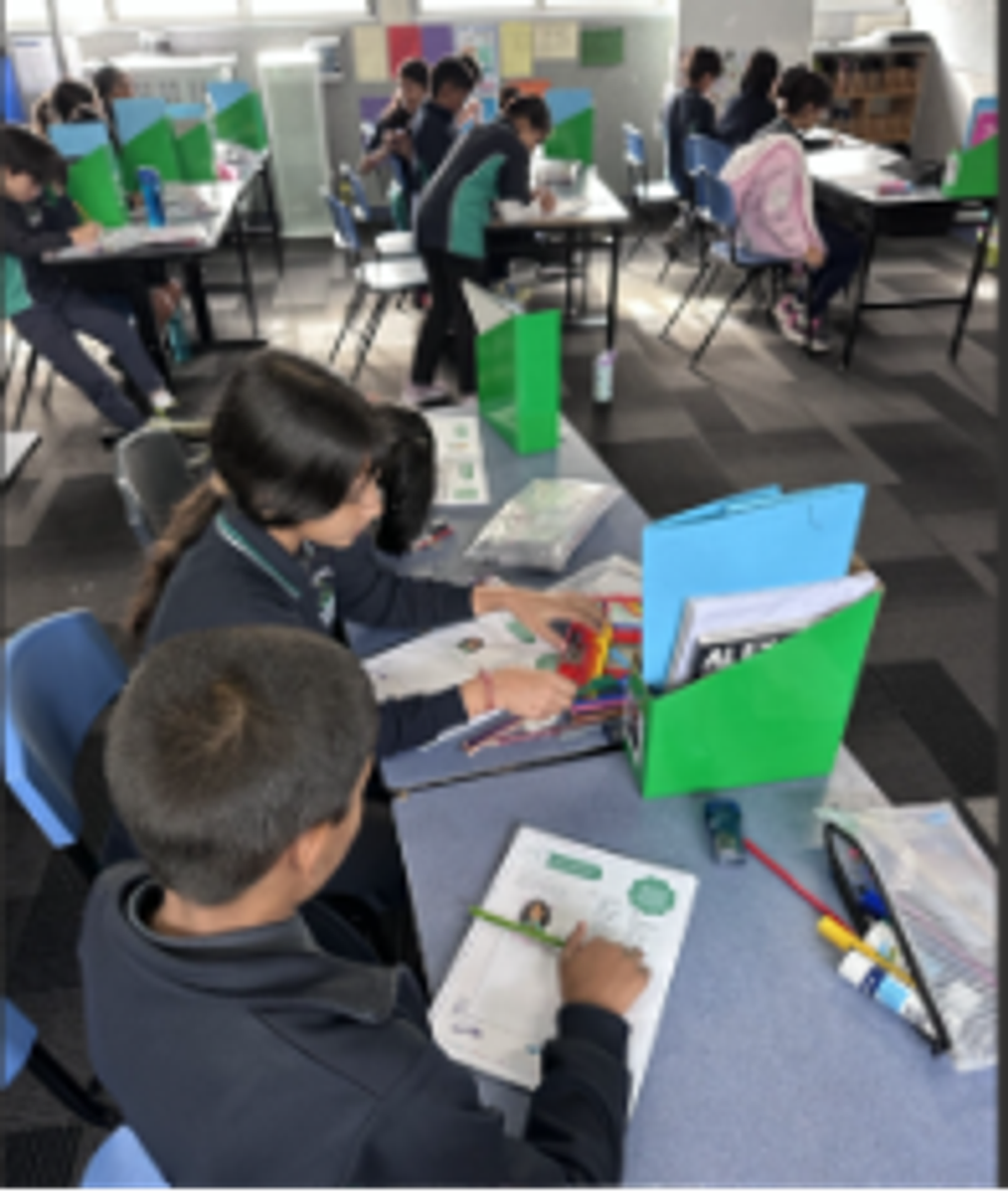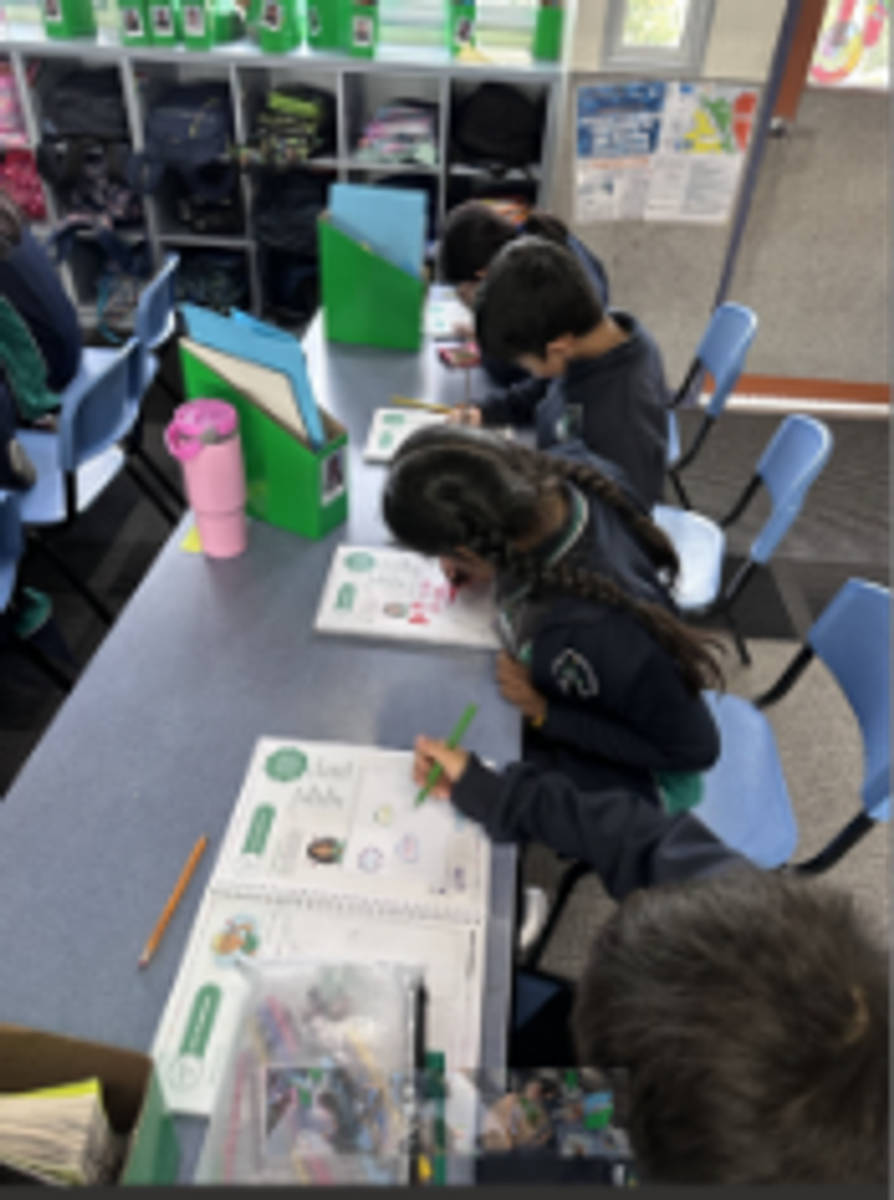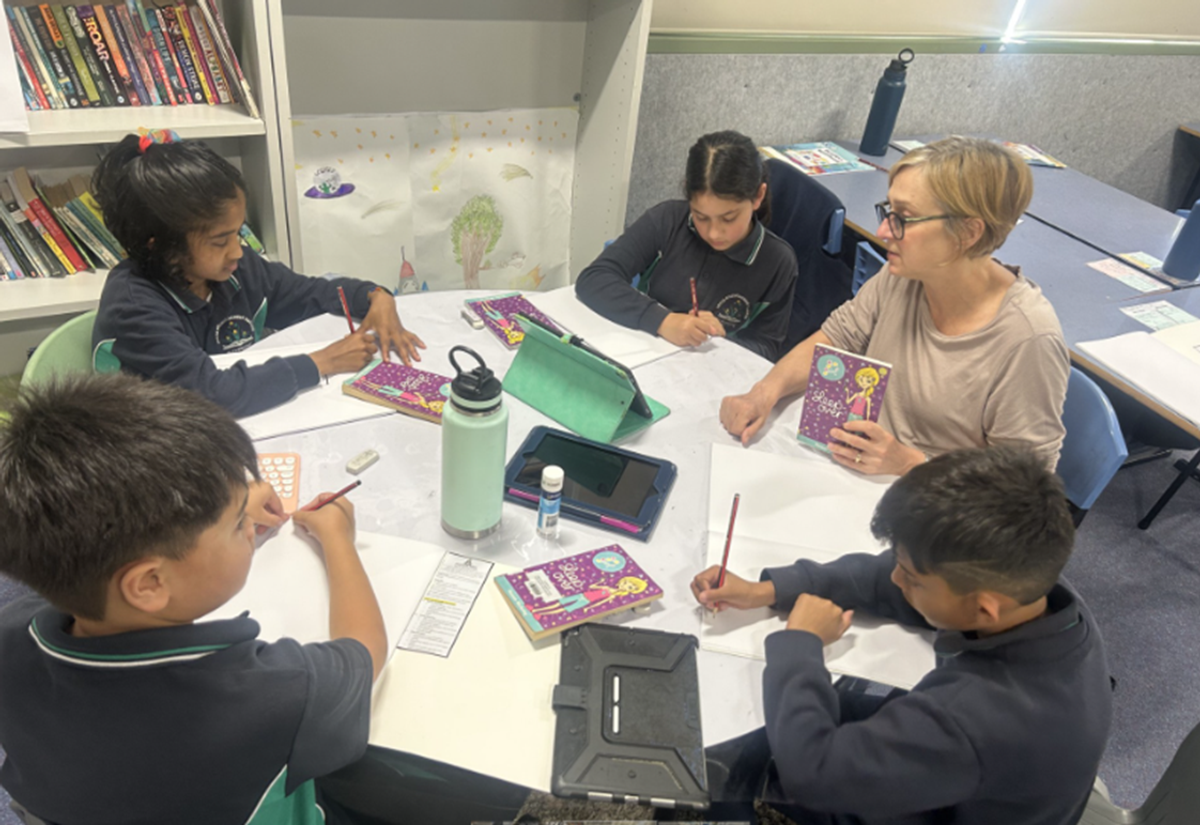Term 2 Level 4 Newsletter
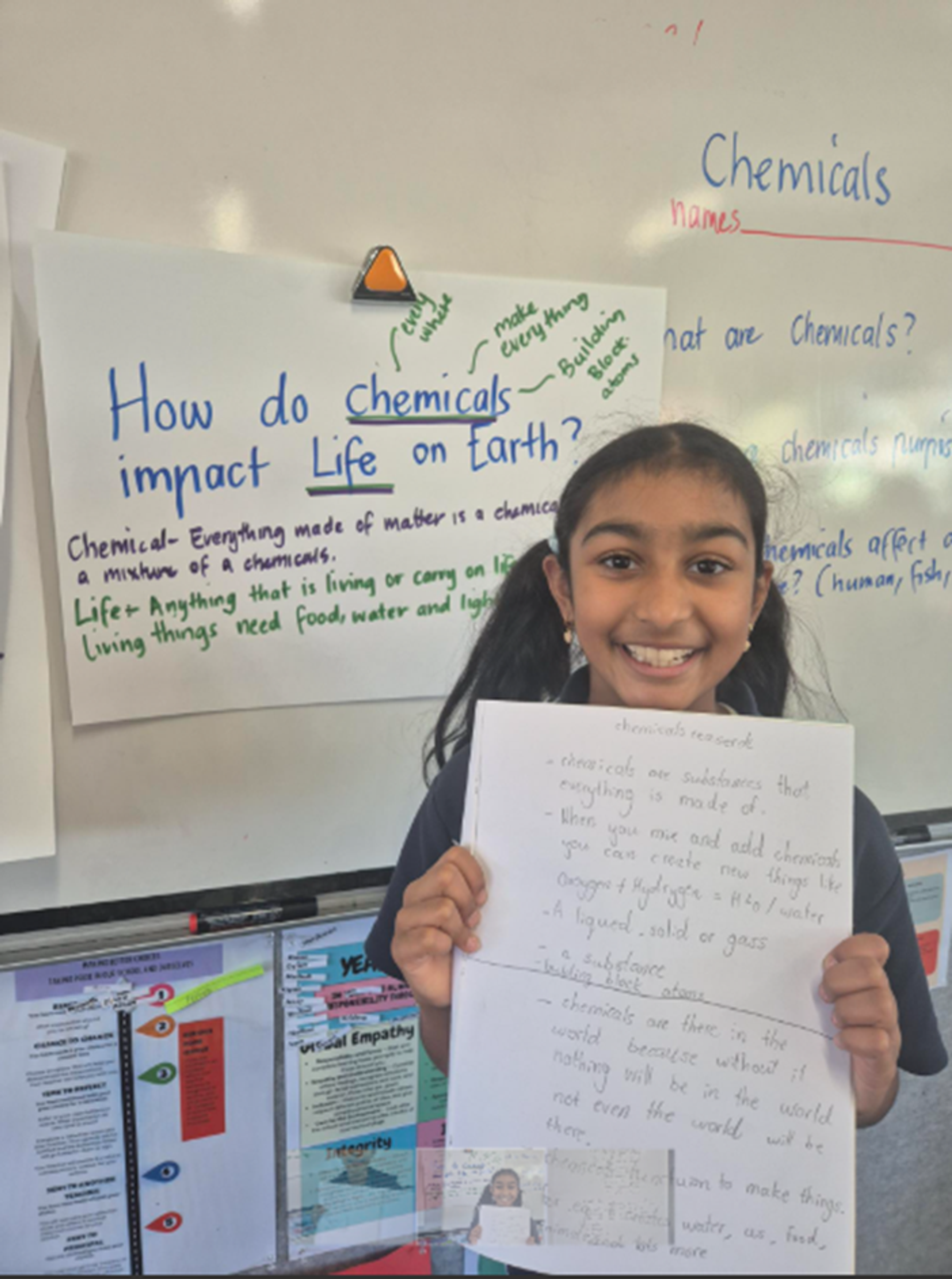
English
Reading
In Term 2, students will engage in a rich and purposeful Reading program that not only develops their comprehension, fluency and vocabulary, but also supports and strengthens their writing through genre-based learning. Each week, students will participate in three key elements of Reading: Library sessions, Literature Circles and genre-based Reading lessons.
Our Library sessions will continue to provide students with time to return and borrow books, read independently, or enjoy a class novel read aloud. These sessions support reading enjoyment, stamina and exposure to a wide range of authors and genres.
Literature Circles will allow students to collaborate in small groups as they take on structured roles such as Discussion Director, Vocabulary Enricher, Literary Luminary and Checker. These roles will be introduced gradually and practised over a two to three-week cycle, building students’ capacity to engage with texts critically, speak confidently and listen respectfully. These skills also support students in discussing and reflecting on the books they read during independent reading and Library sessions.
Our genre-based Reading lessons will focus on two key text types across the term: Narratives and Procedural Texts. Students will closely examine how each genre is structured and why authors make certain language choices to suit their purpose and audience.
During our focus on Narratives, students will explore how authors craft engaging stories using orientation, complication and resolution. They will identify the features that make a strong beginning, how tension is built through character actions and dialogue, and how descriptive language can bring a setting to life. These reading experiences will directly influence and support students as they develop their own narratives in Writing, allowing them to draw inspiration from mentor texts and transfer their learning into creative written pieces.
Later in the term, students will investigate Procedural Texts, exploring how they are organised, how sequencing works, and how language is used clearly and precisely to instruct or explain. This unit will connect strongly with our Inquiry into Chemical Sciences. As students explore the question "How do Chemicals Impact Life on Earth?", they will follow and create instructions for simple experiments and learn how text structures can be used to communicate scientific knowledge effectively. These lessons will also be linked to the United Nations Sustainable Development Goals, encouraging students to think globally and act locally by making connections between scientific processes and environmental sustainability.
Throughout the term, our Reading program will be aligned with the Victorian Curriculum 2.0, the CAFE Reading Framework, and the Big 6 of Reading to ensure explicit, evidence-based instruction.
Key Vocabulary:
- Comprehension – Students learn to understand and respond to texts by making predictions, summarising, inferring, and asking questions as they read.
- Genre – Recognising different genres helps students activate prior knowledge, anticipate structure, and choose appropriate comprehension strategies.
- Literature Circle – Through discussion, students practise reading with expression, listening actively, and explaining their thinking—building fluency and comprehension together.
- Narrative – Exploring narratives supports students in visualising, identifying story elements, and encountering rich vocabulary in context.
- Procedural Text – Reading instructions helps students build accuracy (through decoding and scanning) and comprehension (by sequencing and following steps).
How can you support your child’s READING at home?
Here are a few scaffolded suggestions:
- Read aloud together and pause to talk about what is happening. Ask simple questions like, “What do you think will happen next?” to encourage prediction and engagement.
- Invite your child to read a chapter or page aloud to you, then ask questions like, “What was the problem in the story?” or “Why do you think the character did that?”
- Talk about books they’re reading and explore different genres. Ask reflective questions like, “What message do you think the author was trying to send?” or “Would you have done something differently if you were that character?”
- Encourage writing at home in fun ways—writing a recipe, creating instructions for a game, or keeping a story journal. These real-world writing experiences support classroom learning and build confidence.
Writing
This term, students will focus on developing their skills to write narrative and procedural texts. In narrative writing, students will learn to plan and structure their stories using the Story Mountain model. This includes an opening (introducing the setting and characters), build-up, climax (major problem or event), resolution, and ending. Students will expand their vocabulary by exploring amazing adjectives and vivid verbs to create strong images and make their writing more engaging.
In procedural writing, students will learn how to clearly explain steps in a process, helping others understand and complete a task successfully. They will structure their writing using logical sequencing and topic-specific vocabulary to ensure clarity and precision.
Throughout the term, students will apply the whole-school VOICES approach to refine their writing. This framework encompasses:
VOICES
- Voice: I have created a picture in the reader’s mind
- Organisation: My writing is organised according to the genre structure
- Ideas: I used details that draw upon the give senses (sight, touch, taste, smell, hearing)
- Conventions: Quotation marks have been used to show dialogue
- Excellent Word Choice: I have used description, and the reader can visualise a clear image in their mind
- Sentence Fluency: I have varied my sentence types from one to the next. Some simple and some complex.
Key Vocabulary:
- Story Mountain: The structure of a narrative in a story mountain starts off with an opening (describe the setting, introduce the characters), build up (excitement and tension grows, give emotions), Climax (major dilemma). Resolution (Characters find a route through their difficulties) and Ending.
- Amazing Adjectives: These are describing words that help add detail and bring characters, settings, and objects to life. For example, instead of “the dog,” students might write “the playful, scruffy dog.”
- Vivid Verbs: These are action words that show exactly what’s happening and help the reader picture it clearly. For example, instead of “ran,” students might write “sprinted” or “raced.”
- Logical sequencing: Organise their ideas, events, or steps in an order that makes sense. It helps the reader follow the writing clearly, whether it's a story or a set of instructions.
- Topic specific vocabulary (Tier 3 words): refers to words that are closely related to the subject they’re writing about. Using these words helps students explain their ideas more accurately and confidently.
How can you support your child’s Writing at home?
- Talk about the words authors use When reading together, chat about how things are described in the book. Ask questions like, “What do you picture when you read that?” or “Why do you think the author used that word?”
- Practice using the five senses Help your child describe places or objects using their senses — what they see, hear, smell, feel, and taste. For example, describing a beach might include “the salty smell in the air” or “the warm sand underfoot.”
- Give and follow instructions Let your child be the teacher! Ask them to explain how to do something step by step, like making a sandwich or tying shoelaces. This helps them practise using clear instructions — an important skill in procedural writing.
Spelling/Grammar
In Term 2, students will focus on enhancing their spelling and vocabulary skills to improve their writing and reading comprehension. The curriculum will cover:
- Spelling Strategies: Students will learn to apply knowledge of letter patterns, including double letters, spelling generalizations, morphemic word families, and common prefixes and suffixes, to spell more complex words.
- Homophones: Students will read and write a large core of high-frequency words, including homophones, and learn to use context to identify the correct spelling.
- Vocabulary Expansion: Through exposure to Tier 2 and Tier 3 words, students will develop a deeper understanding of word meanings and usage, enhancing their reading and writing abilities.
Key Vocabulary:
- Morpheme
- Homophone
- Prefix
- Suffix
- Context
Supporting Your Child's English Learning at Home:
- Engage in Word Exploration: Discuss the meanings of unfamiliar words encountered during reading or daily conversations. Break words down into their morphemic components (prefix, root, suffix) to understand their structure and meaning.
- Practice with Homophones: Create sentences using pairs of homophones (e.g., "there" and "their") to help your child understand their meanings and correct usage.
- Incorporate Word Games: Play word-based games such as Scrabble, Boggle, or crossword puzzles to make spelling practice enjoyable and interactive.
- Read Together: Read a variety of texts with your child, discussing the context and usage of new words. Encourage them to use new vocabulary in their own writing and speech.
Mathematics
(Summary of Learning):
In Term 2 we will be covering a wide variety of mathematical topics that will involve hands on tasks and real-world applications. The curriculum will cover:
- Perimeter and Area: Calculating the perimeter and area of regular and irregular shapes and solving worded problems.
- Fractions: Comparing and ordering fractions with the same and related denominators and placing them on a number line.
- 3D Objects: Identifying, drawing and designing the nets of 3D objects.
- Decimals: Writing, comparing and order decimals up to thousandths.
- Probability: Conducting chance experiments and comparing the expected and actual outcomes.
- 2D Shapes: Rotating, translating and reflecting shapes
- Time: Interpreting and creating timetables and schedules using 12- and 24-hour time.
Key Vocabulary:
Perimeter and Area | Fractions | 3D Objects | Decimals |
length width height square units formula | denominator numerator improper fraction mixed numeral
| net face edge vertex/ vertices surface prism
| tenths hundredths thousandths decimal point place value |
Probability | 2D Shapes | Time | |
chance experiment equally likely fair possible outcomes probability unfair | anti-clockwise clockwise half turn horizontal quarter turn reflect rotate symmetrical transform translate vertical | 12-hour time 24-hour time am pm schedule timetable
| |
How can you support your child’s Mathematics learning at home?
Perimeter and Area: Build with blocks: Use building blocks or LEGO to create shapes and calculate their perimeter and area.
Fractions: Follow a recipe, taking note of the different measure cups and spoons that are needed.
3D Shapes: Identify different examples of 3D objects you can find around your home.
Decimals: Identify examples around home and at the shops where decimals are used (e.g. temperature, prices, distances.
Probability: experiment with different examples of probability such as, flipping a coin or rolling a dice
2D Shapes: Identify different examples of 2D shapes you can find around your home.
Time: Practice reading the time on different analogue and digital clocks.
Inquiry
Question: How do chemicals impact life on Earth?
Connected Global Goals:
| Goal 3: Good Health and Well-being | - Students explore the impact of chemicals on human health (household cleaners, plastics, pollution). - Encourages choosing safer alternatives. |
| Goal 6: Clean Water and Sanitation | - Investigating how chemical waste affects water systems. - Promotes reducing harmful chemical disposal (e.g., avoiding toxic cleaning products). |
| Goal 12: Responsible Consumption and Production | - Focus on reducing processed materials and choosing sustainable alternatives. - Encourages waste reduction, recycling and sustainable choices at home and school. |
| Goal 13: Climate Action | - Students explore how chemical pollution and material processing contribute to climate change. - Encourages actions to reduce personal and school-wide environmental impact. |
| Goal 14: Life Below Water | - Investigates how plastic pollution and chemicals harm marine life. - Encourages reducing single-use plastics and choosing biodegradable materials. |
| Goal 15: Life on Land | - Examines the impact of waste and pollution on ecosystems. - Promotes choosing eco-friendly alternatives to protect land and wildlife. |
During Term Two, learners will investigate the difference between natural and processed materials, as well as the various chemicals that make up those products. They will explore the impacts chemicals have on the environment and how different products could replicate the effectiveness of others. Learners will apply the Scientific Method through hands-on experiments and the Mini Lab incursion, delving deeper into the experimental process and understanding the importance of observations and forming a hypothesis. Students will determine a personal change or action to take home and will build awareness of chemical use in the world. They will identify an action the whole school could take to raise awareness of the impact chemicals have on living things and will examine chemically based alternative packaging.
Key Vocabulary: Matter, Solid, Liquid, Gas, Chemicals, Absorbency, Flexibility, Conductivity, Alternative packaging, Hypothesis, Processed and Natural Materials.
How can you support your child’s Inquiry learning at home?
- Talk About Everyday Materials Encourage your child to explore materials around the house. Ask questions like, “Do you think this is natural or processed?” or “What do you think this is made from?” This builds awareness of how materials are used in real life.
- Explore Packaging Together Look at food and product packaging during grocery shopping or recycling. Discuss why certain materials are used and if there are better alternatives for the environment. This supports critical thinking and links to sustainable practices.
- Encourage Curiosity with Simple Experiments Try easy science activities at home, like mixing baking soda and vinegar or testing which materials float or sink. These hands-on experiences spark curiosity and help children understand chemical reactions and material properties in fun ways.
Wellbeing
In Term 2, students will continue learning The Resilience Project, a program designed to build emotional intelligence and foster resilience through practical strategies. The focus will be on developing the five key pillars of Gratitude, Empathy, and Mindfulness, emotional literacy and connection which are essential for managing emotions, building strong relationships, and navigating challenges with a positive outlook.
Throughout the term, students will engage in activities that promote these pillars in their daily lives. These activities will be incorporated into classroom routines and discussions, providing students with the tools to enhance their emotional wellbeing. You can explore The Resilience Project at Home Hub here.
Cyber Safety Project
In Term 2, our Level 4 students will also continue the journey focused on Cyber Safety, with an emphasis on the theme of Responsibility. This project will help our students develop essential digital literacy skills, while also encouraging them to think critically about their actions and well-being in the online world. This will include lessons on digital citizenship, respecting others online, and maintaining privacy and security when using technology in the classroom. By the end of Term 2, students will have developed essential skills for navigating both their emotional wellbeing and the digital world safely, helping them to thrive both academically and personally.
In addition to the core lessons from The Resilience Project and Cyber Safety Project, extra wellbeing sessions will be planned based on the specific needs of the cohort and what the teachers may observe throughout the term. These sessions will allow for targeted support in areas where students may require additional guidance or practice.
Key Vocabulary:
Here is some key vocabulary terms related to the wellbeing focus and technology safety for Term 2:
Resilience: The ability to recover quickly from difficulties and adapt to challenges with a positive mindset.
Gratitude: The practice of being thankful and appreciating the good things in life.
Empathy: The ability to understand and share the feelings of others, showing kindness and consideration.
Mindfulness: The practice of staying present and fully engaging in the current moment, often used to reduce stress and improve focus.
Emotional Literacy: The ability to recognize, understand, express, and manage one's own emotions, as well as empathize with the emotions of others.
Connections: The dynamic, living interactions between individuals that involve mutual awareness and social engagement, contributing to emotional well-being.
Emotional Intelligence: The ability to recognise, understand, and manage one's emotions, and the emotions of others.
Digital Citizenship: The responsible and ethical use of technology and the internet, including respecting others online.
Privacy: The right to control personal information and ensure it is kept secure from others.
Cyber Safety: The practice of protecting oneself and others from risks when using the internet and digital devices.
Digital Footprint: The trail of data and information a person leaves behind when using the internet.
Self-regulation: The ability to manage one's emotions, behaviour, and reactions in different situations, especially under stress.
Wellbeing: The state of being comfortable, healthy, and happy, both physically and mentally.
These terms will help students understand the core concepts of resilience, emotional wellbeing, and safe technology use, enhancing their learning and discussions both in and out of the classroom.
How can you support your child’s Wellbeing learning at home?
Here are some ways you can support your child’s wellbeing learning at home:
1. Encourage Daily Gratitude Practices
You can help your child build a habit of gratitude by encouraging them to reflect on one thing they are grateful for each day. This could be shared during family meals or written down in a gratitude journal. This simple practice will help your child focus on the positive aspects of their day and build a more optimistic mindset.
2. Model Empathy and Active Listening
You play an important role in helping your child develop empathy. By modelling how to listen actively and respond thoughtfully to others, you can show them the value of considering other people’s feelings. Discuss real-life situations where empathy makes a difference and even try role-playing different scenarios to help them practise these skills at home.
3. Promote Mindfulness and Calmness
You can guide your child through simple mindfulness activities like deep breathing exercises or moments of calm during their daily routine. Helping them practice staying calm, focused, and present will be especially beneficial when they’re feeling stressed or overwhelmed.
4. Discuss Digital Safety Practices
As your child begins using their iPad and digital tools in class, it’s important to reinforce the importance of digital safety at home. Discuss responsible online behaviour, the importance of respecting others, and keeping their personal information private. Setting clear guidelines for screen time and encouraging safe online choices will help them use technology in a responsible and secure way.
By supporting these practices at home, you’ll help your child strengthen their emotional resilience and develop the skills they need to thrive both at school and in everyday life.
Summary of Learning:
In Term 2, students will engage in a rich, interconnected learning program designed to build both academic skills and personal growth. With a strong focus on critical thinking, creativity, and collaboration, students will explore meaningful concepts, apply their learning to real-world contexts, and develop confidence in expressing their ideas. This term also places emphasis on emotional wellbeing and responsible digital behaviours, ensuring students feel supported, connected, and empowered in all aspects of their learning. With continued encouragement at home, students are set to make deep and lasting progress throughout the term.
